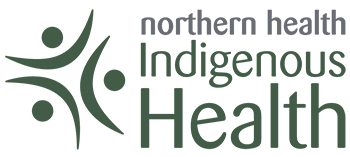Each week, the Indigenous Health department highlights good news stories from the North and from across the country.
Lheidli T’enneh sign largest First Nations Woodland Licence (FNWL) agreement in BC
In 2021, Lheidli T’enneh First Nation worked with the BC government to negotiate a government-to-government forest tenure opportunity that they have now signed. This will allow Lheidli T’enneh exclusive timber harvesting rights to 217,312 hectares within Lheidli T’enneh First Nation’s territories east of Prince George. This will offer decision making authority over cultural use as well as supporting management over planning, development, and harvesting of these timber resources.
"The province has heard loud and clear that First Nations across British Columbia want to play a larger role in the forest sector and in sustainable forest management. That's why we are engaging in government-to-government dialogue that considers the inherent rights, diversity of interests and values of Indigenous communities," said Katrine Conroy, Minister of Forests.
She also noted, "Today's agreement is real progress toward meaningful reconciliation and meeting our commitment to create new opportunities for Indigenous Peoples by doubling the amount of replaceable forest tenure held by First Nations."
Read more about this important initiative on the Prince George Citizen website.
Sixties Scoop society launches in BC to support survivors
The newly launched Sixties Scoop Indigenous Society of BC organization hopes to help healing and reunification for survivors of the Sixties Scoop. The Sixties Scoop is “the catch-all name” for policies in which Indigenous children were removed from their families without consent and placed into the child welfare system.
During the late 1950s to early 1980s, over 22,500 First Nations, Inuit, and Métis children were forcibly removed as part of the practice, according to the Sixties Scoop Network, and many families were not informed about where their children were taken.
“I would like to see us be able to facilitate reunification, and to facilitate some of us returning home, and being able to facilitate where we can assist them through the whole process,” stated Pamela Abraham who, along with Elizabeth Charlie, are members of the society.
To learn more, read the full article on the CBC News website.
Burnaby to install first reconciliation crosswalk
A grade 6 and 7 class at Westridge Elementary worked with the Burnaby School District’s Indigenous Education Department and the City of Burnaby to develop a First Nations-themed crosswalk near the school that is often used by students.
The crosswalk was designed by Atheana Picha, a Salish artist who is a member of the Kwantlen First Nation. The city is funding up to $20,000 to install the crosswalk and the class also received a $750 grant from the National Centre for Truth and Reconciliation to support the project.
Teacher Audrey Venner’s class initiated the project after learning about the Truth and Reconciliation Commission’s 94 Calls to Action, specifically Call 82, “which urges communities to install a publicly accessible and highly visible monument to residential school survivors.”
To see the crosswalk design and learn more about this story, visit the Vancouver Sun News website.

